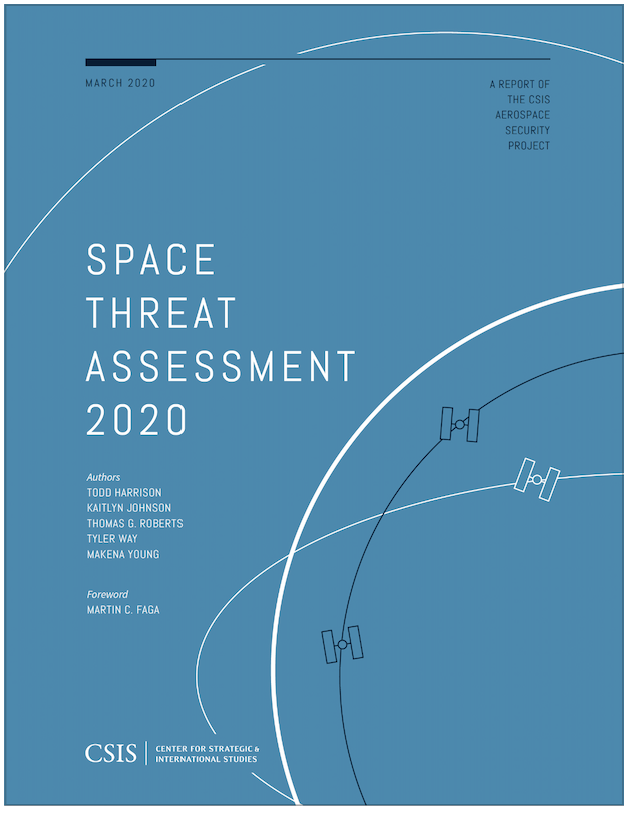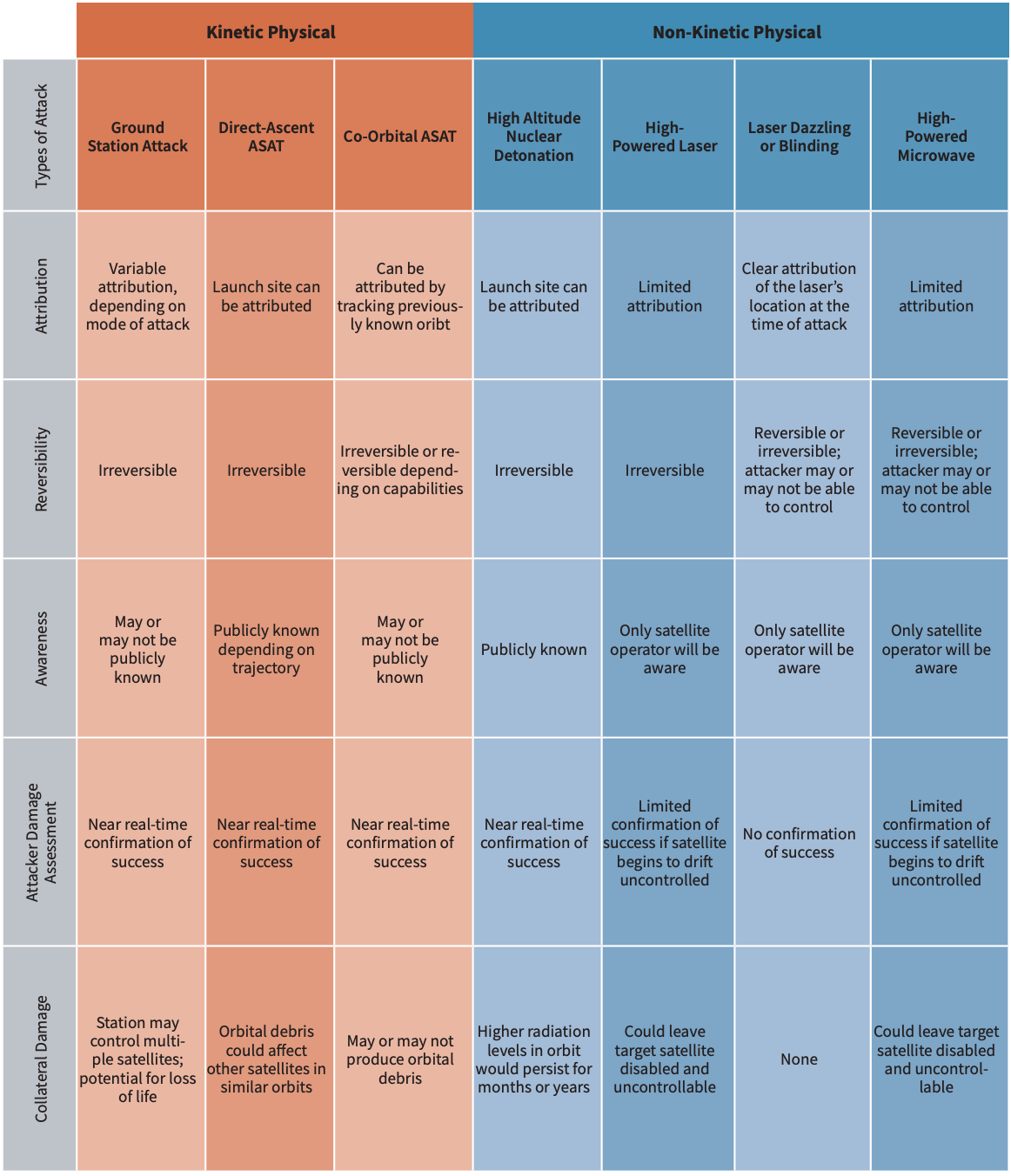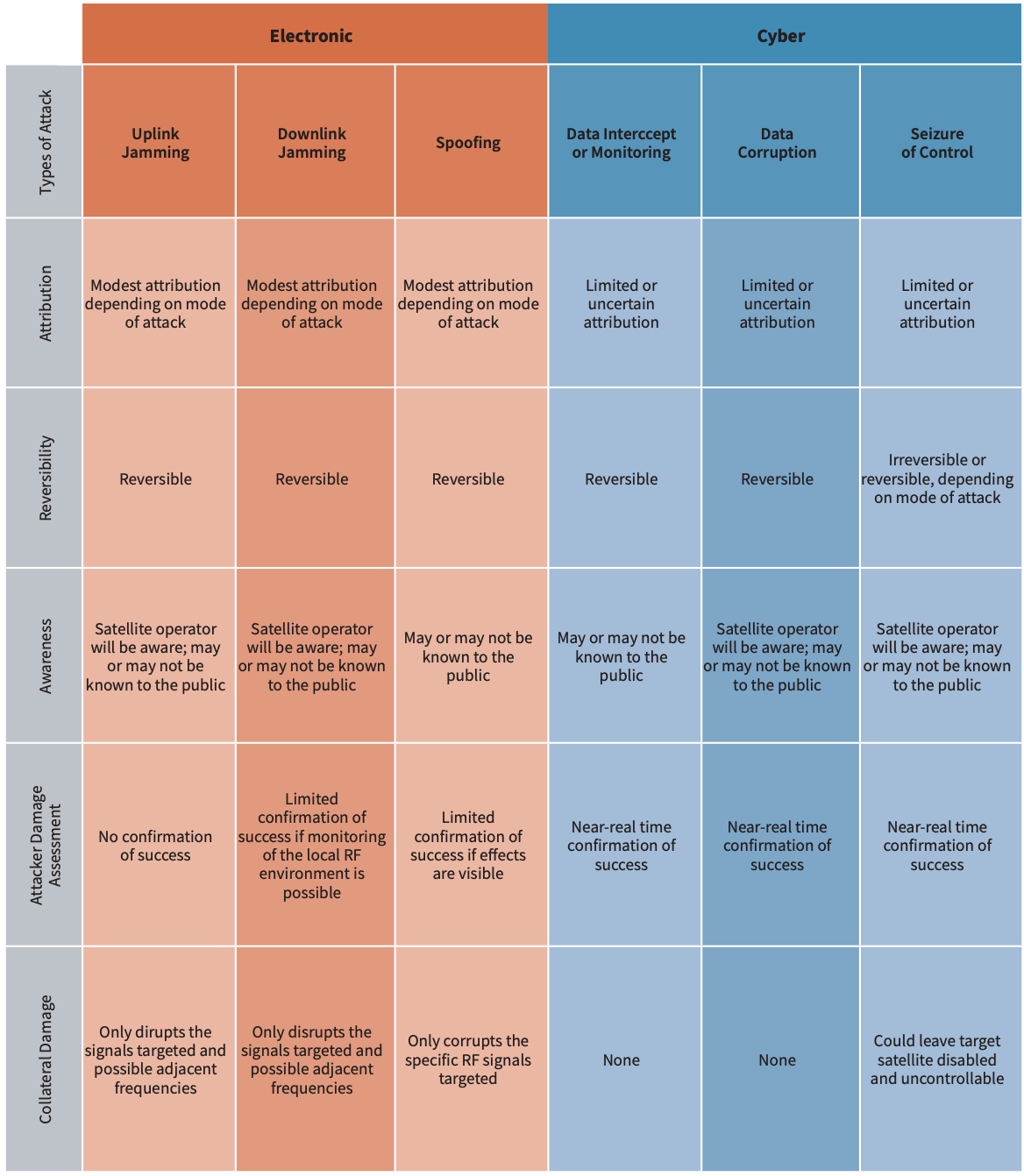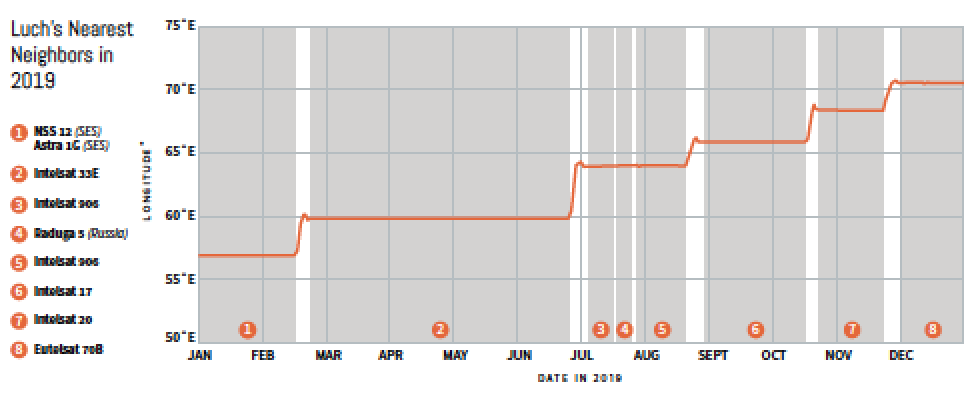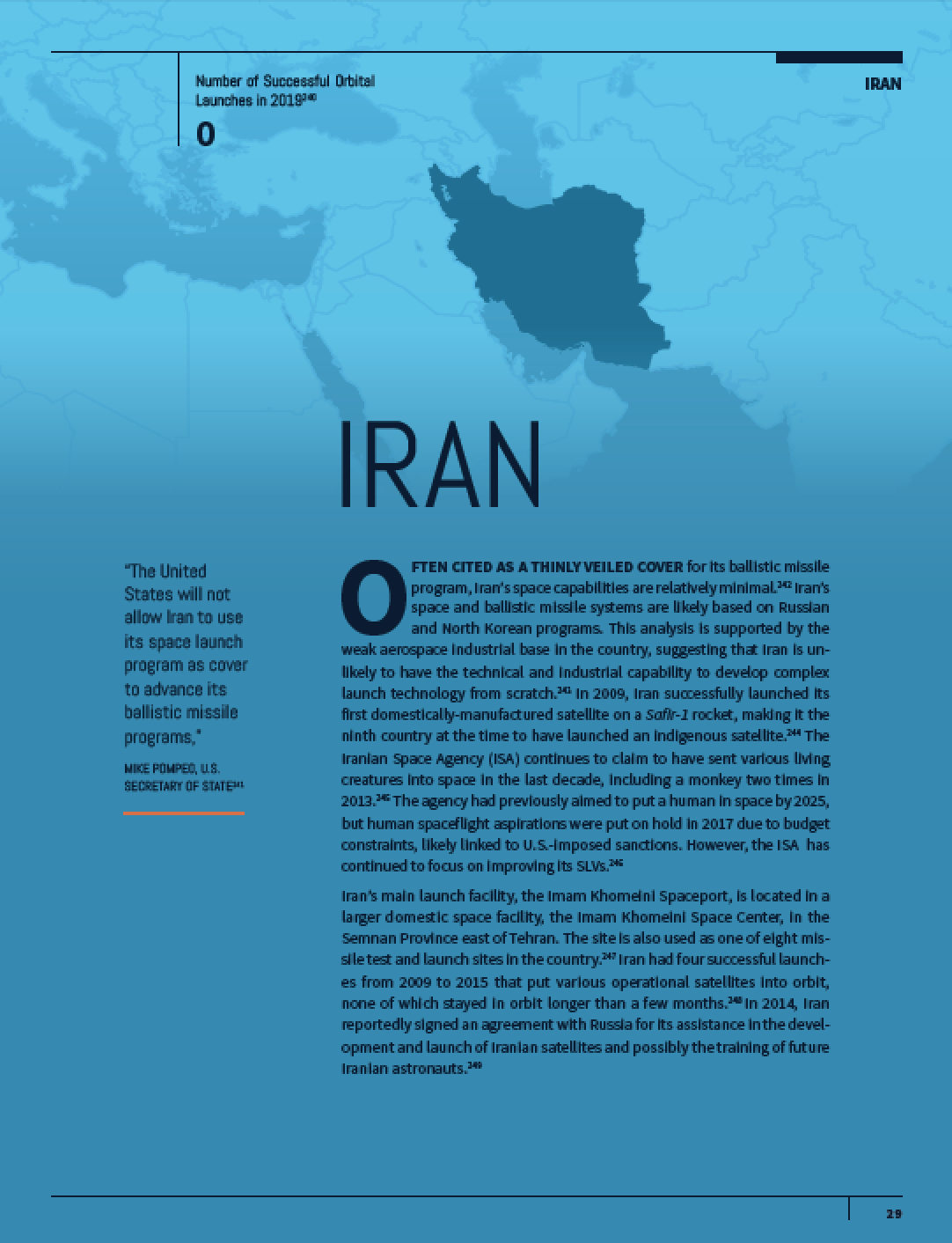Space Threat Assessment 2020 reviews the open-source information available on the counterspace capabilities that can threaten U.S. space systems and which countries are developing such systems. The report is intended to raise awareness and understanding of the threats, debunk myths and misinformation, and highlight areas in which senior leaders and policymakers should focus their attention.
Forward
Much is said these days about the possibility of conflict in space during, before, or perhaps, instead of conflict on land, at sea, or in the air. Why is this the case? The subject is discussed as though it emerged in the last 13 years since the Chinese demonstration of a kinetic ASAT in 2007. In fact, the United States was concerned in 1957 that Sputnik represented a precursor to space-based nuclear weapons. An ASAT program started in the United States in 1958, and the Soviets did similarly. Both superpowers deployed several ASAT systems and performed orbital tests.
Nonetheless, fear on both sides of a serious threat of conflict in space did not emerge until recently. Both the Soviets and the United States understood that the satellites of “National Technical Means” were stabilizing and were keys to de-escalation should a conflict occur. This view changed after the First Gulf War, when space systems moved from being primarily strategic systems to tactical ones providing near real-time support to tactical forces. By that time, the satellites of the Department of Defense and of the Intelligence Community operated and reported almost instantly, and the military services developed the equipment and techniques to acquire, analyze, and distribute space system information very quickly.
Following the First Gulf War, a Russian analysis of the rapid American success noted the efficacy of precision weapons and real-time intelligence. Much of this capability depended on space systems and spurred the Russians and Chinese to a sustained program to develop ASAT capabilities--not only those for physical attack but cyber and electronic attacks as well. In recent years, we have read Russian and Chinese doctrine explaining the importance of ASAT capabilities, and we have seen systems deployed to carry them out.
The situation we confront today was inevitable. Capability is always met with counter-capability. In recognition of this need to defend and to increase our space power in the face of such threats, the United States has wisely created the Space Force and the U.S. Space Command. This is where the people who will design, build, and operate our military space systems reside and where personnel will be trained, careers managed, doctrine developed, and a myriad other elements of a military force undertaken.
Several years ago, an Army general gave a speech where he said, “every company commander depends on space, and takes it for granted.” What a challenge for our Space Force and Space Command to assure that our military is served at every level of command without failing.
Martin C. Faga, Former Assistant Secretary of the Air Force for Space and Director of the National Reconnaissance Office
Types of Counterspace Weapons
SPACE IS AN INCREASINGLY IMPORTANT ENABLER of economic and military power. The December 2017 United States National Security Strategy prioritizes maintaining U.S. leadership and freedom of action in this critical domain, but it notes that:
Many countries are purchasing satellites to support their own strategic military activities. Others believe that the ability to attack space assets offers an asymmetric advantage and as a result, are pursuing a range of anti-satellite (ASAT) weapons. The United States considers unfettered access to and freedom to operate in space to be a vital interest. Any harmful interference with or an attack upon critical components of our space architecture that directly affects this vital U.S. interest will be met with a deliberate response at a time, place, manner, and domain of our choosing.
Counterspace weapons vary in the types of effects they create, and the level of technological sophistication and resources required to develop and field them. They also differ in how they are employed and how difficult they are to detect and attribute. The effects of these weapons can be temporary or
permanent, depending on the type of system and how it is used. The country-by-country assessments that follow this section group counterspace weaponsinto four broad categories: kinetic physical, non-kinetic physical, electronic, and cyber.
> Kinetic Physical
Kintec Physical Counterspace weapons attempt to strike directly or detonate a warhead near a satellite or ground station. A direct-ascent ASAT weapon attempts to strike a satellite using a trajectory that intersects the target satellite without placing the interceptor into orbit. Ballistic missiles and missile defense interceptors can be modified to act as direct-ascent ASAT weapons provided they have sufficient energy to reach the target satellite’s orbit. A co-orbital ASAT weapon differs from a direct-ascent weapon because it is first placed into orbit. When commanded, the satellite then maneuvers to strike its target. Co-orbital ASATs can remain dormant in orbit for days or even years before being activated. A key technology needed to make both direct-ascent and co-orbital ASAT weapons effective is the ability to detect, track, and guide the interceptor into a target satellite. An onboard guidance system requires a relatively high level of technological sophistication and significant resources to test and deploy.
> Non-Kinetic Physical
Non-Kinetic Counterspace weapons, such as lasers, high-powered microwave (HPM) weapons, and electromagnetic pulse (EMP) weapons, can have physical effects on satellites and ground stations without making physical contact. These attacks operate at the speed of light and, in some cases, can be less visible to third-party observers and more difficult to attribute. High-powered lasers can be used to damage or degrade sensitive satellite components, such as solar arrays. Lasers can also be used to temporarily dazzle or permanently blind mission-critical sensors on satellites. Targeting a satellite from Earth with a laser requires high beam quality, adaptive optics, and advanced pointing control to steer the laser beam as it is transmitted through the atmosphere—technology that is costly and requires a high degree of sophistication.3 A laser can be effective against a sensor on a satellite if it is within the field of view of the sensor, making it possible to attribute the attack to its approximate geographical origin. The attacker, however, will have limited ability to know if the attack was successful because it would not likely produce debris or other visible indicators.
> Electronic
Electronic attacks target the means through which space systems transmit and receive data by jamming or spoofing radio frequency (RF) signals. Jamming is a form of electronic attack that interferes with RF communications by generating noise in the same frequency band and within the field of view of the antenna on the targeted satellite or receiver. An uplink jammer interferes with the signal going from the Earth to a satellite, such as the command and control uplink. Downlink jammers target the signal from a satellite as it propagates down to users on the Earth. User terminals with omnidirectional antennas, such as many GPS receivers and satellite phones, have a wider field of view and thus are susceptible to downlink jamming from a wider range of angles on the ground.
The technology needed to jam many types of satellite signals is commercially available and relatively inexpensive. Jamming is a reversible form of attack because once a jammer is turned off, communications return to normal. Jamming can also be difficult to detect or distinguish from accidental interference, making attribution and awareness more difficult. In 2015, General John Hyten, then-commander of Air Force Space Command, noted that the U.S. military was unintentionally jamming its own communications satellites an average of 23 times per month.
> Cyber
Unlike Electronic attacks, which interfere with the transmission of RF signals, cyberattacks target the data itself and the systems that use this data. The antennas on satellites and ground stations, the landlines that connect ground stations to terrestrial networks, and theuser terminals that connect to satellites are all potential intrusion points for cyberattacks. Cyberattacks can be used to monitor data traffic patterns (i.e., which users are communicating), to monitor the data itself, or to insert false or corrupted data in the system. While cyberattacks require a high degree of understanding of the systems being targeted, they do not necessarily require significant resources to conduct. Cyberattacks can be contracted out to private groups or individuals, which means that a state or non-state actor that lacks internal cyber capabilities may still pose a cyber threat.
A cyberattack on space systems can result in data loss, widespread disruptions, and even permanent loss of a satellite. For example, if an adversary can seize control of a satellite through a cyberattack on its command and control system, the attack could shut down all communications and permanently damage the satellite by expending its propellant supply or damaging its electronics and sensors. Accurate and timely attribution of a cyberattack can be difficult, if not impossible, because attackers can use a variety of methods to conceal their identity, such as using hijacked servers to launch an attack.
> Threat Characteristics
The types of counterspace threats described above have distinctly different characteristics that make them more suitable for use in some scenarios than others. As shown in Table 1, some types of counterspace threats are difficult to attribute or have fully reversible effects, such as mobile jammers. High-powered lasers, for example, are “silent” and can carry out an attack with little public awareness that anything has happened. Other types of counterspace weapons produce effects that make it difficult for the attacker to know if the attack was successful, and some produce collateral damage that can affect space systems other than the one being targeted.
China
In the past decade, China has been barreling toward its lofty space goals. In the 2010s alone, China conducted over 200 successful orbital launches. China’s civil, military, and commercial capabilities are rapidly growing, and its 2020 plans show that the country aims to launch over 60 satellites into orbit via 40 launches over the coming year.
China’s civil space program is focused on its network of BeiDou positioning, navigation, and timing (PNT) satellites, similar to the U.S. Global Positioning System (GPS). China plans on launching two BeiDou satellites into geostationary orbit (GEO) in 2020 as well as further developing its Gaofen remote sensing satellite constellation. Since early 2019, Chang’e-4, the Chinese lunar lander mission that delivered a successful lunar rover called Yutu-2, has been conducting an exploration mission on the far side of the Moon. China plans to follow up this mission in late 2020 with Chang’e-5, a mission that aims to return samples from the Moon back to Earth for further study. To support its growing space capabilities, China has “built an expansive ground support infrastructure to support its growing on-orbit fleet and related functions including spacecraft and space launch vehicle (SLV) manufacture, launch, C2 [command and control], and data downlink.”
China also intends to send a mission to Mars with an orbiter and probe. This mission will include 13 science payloads and is on track for a July 2020 launch. Three different launch vehicles are also scheduled to make their first flight in 2020: the Long March-5B, the Long March-7A, and the Long March-8.
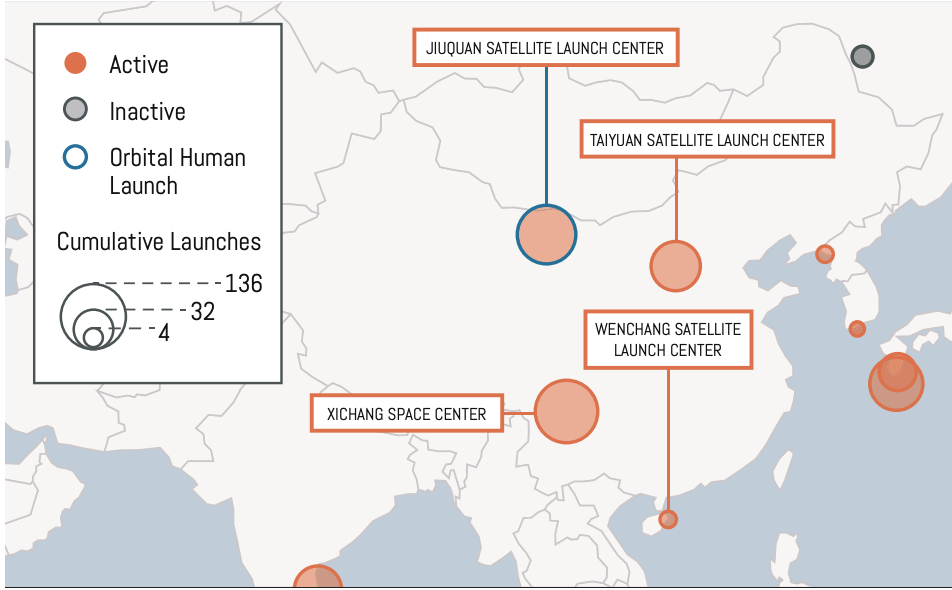 Figure 1: Chinese National Spaceports. China currently has four active spaceports, which have collectively launched hundreds of satellites and several taikonauts, or Chinese astronauts. space-track.org/csis aerospace security
Figure 1: Chinese National Spaceports. China currently has four active spaceports, which have collectively launched hundreds of satellites and several taikonauts, or Chinese astronauts. space-track.org/csis aerospace security 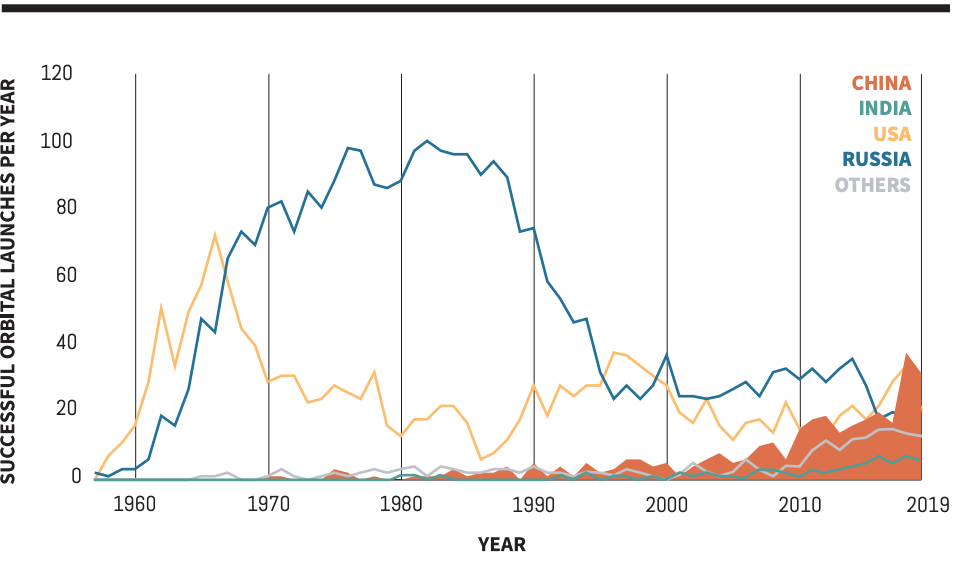 Figure 2: Chinese Orbital Space Launches (1957-2019). China had more successful orbital space launches in 2019 than any other nation. space-track.org/csis aerospace security
Figure 2: Chinese Orbital Space Launches (1957-2019). China had more successful orbital space launches in 2019 than any other nation. space-track.org/csis aerospace security
The Long March-5B will be China’s heavylift workhorse, supporting future exploration missions as well as the planned Chinese Space Station (CSS). The first test launch of the -5B will likely take place in April 2020. If successful, it will be used to launch the first section of the modular CSS.
The Long March-8 is planned to be China’s first rocket with a reusable first stage and is planned to support China’s growing commercial space sector.17 Furthermore, “China aspires for a 2036 first human mission to the moon.”
China is continuing to move forward with a new modular space station. China has successfully operated two previous space labs in LEO, Tiangong 1 and Tiangong 2, through its Project 921 program, which began in 1992. The new space station will consist of three modules. The core module of the CSS passed final review but is facing possible launch delays. Currently, it is expected to launch in 2020, while the two additional modules are planned for launch between 2022 and 2024. Three or four manned missions and several cargo missions are also planned, but launch delays have caused schedules to slip for the entire program. The station is estimated to have a 10- year lifespan, with the possibility of an extension.
China is also expanding its international cooperation. China hosted a selection process for opportunities to host scientific payloads on the CSS. The final selection was announced in 2019 and includes nine projects, involving “ institutions from 17 Member States of the United Nations in Asian-pacific, European, African, North American and South American regions.” China has furthered its space partnership with Russia through cooperating to develop “Russia’s future Luna-26 lunar orbiter, China’s Chang’e-7 lunar polar lander, and a joint lunar and deep space data center with a hub in each country.”
China’s busiest launch site, the Xichang Satellite Launch Center, hosted 19 of China’s 32 launches in 2019. Located in the south of China, Xichang is currently expanding by adding another launch pad in order to keep pace with China’s growing national and commercial launch demands.
After a 2014 decree to allow private companies to develop SLVs, several new nominally private (though typically state-backed) Chinese companies began to develop and test new launch vehicles. China's commercial space companies grew from around 30 in 2017 to over 100 in 2018. This growth has led to the introduction of new commercial policies in 2019 in order to better regulate the growing commercial space launch sector. These regulations have had a relatively positive response from Chinese commercial companies.
Russia
With the dissolution of the Soviet Union in 1991, Russia inherited both the majority of the former state’s vast space infrastructure and its place among the global space powers. Since then, Russia has maintained a leading role in the global space community by operating the third-largest number of satellites on orbit, serving as a critical partner in international human spaceflight, and managing several of the world’s busiest spaceports—all while facing an inconsistent federal budgetary environment and claims of widespread internal corruption.
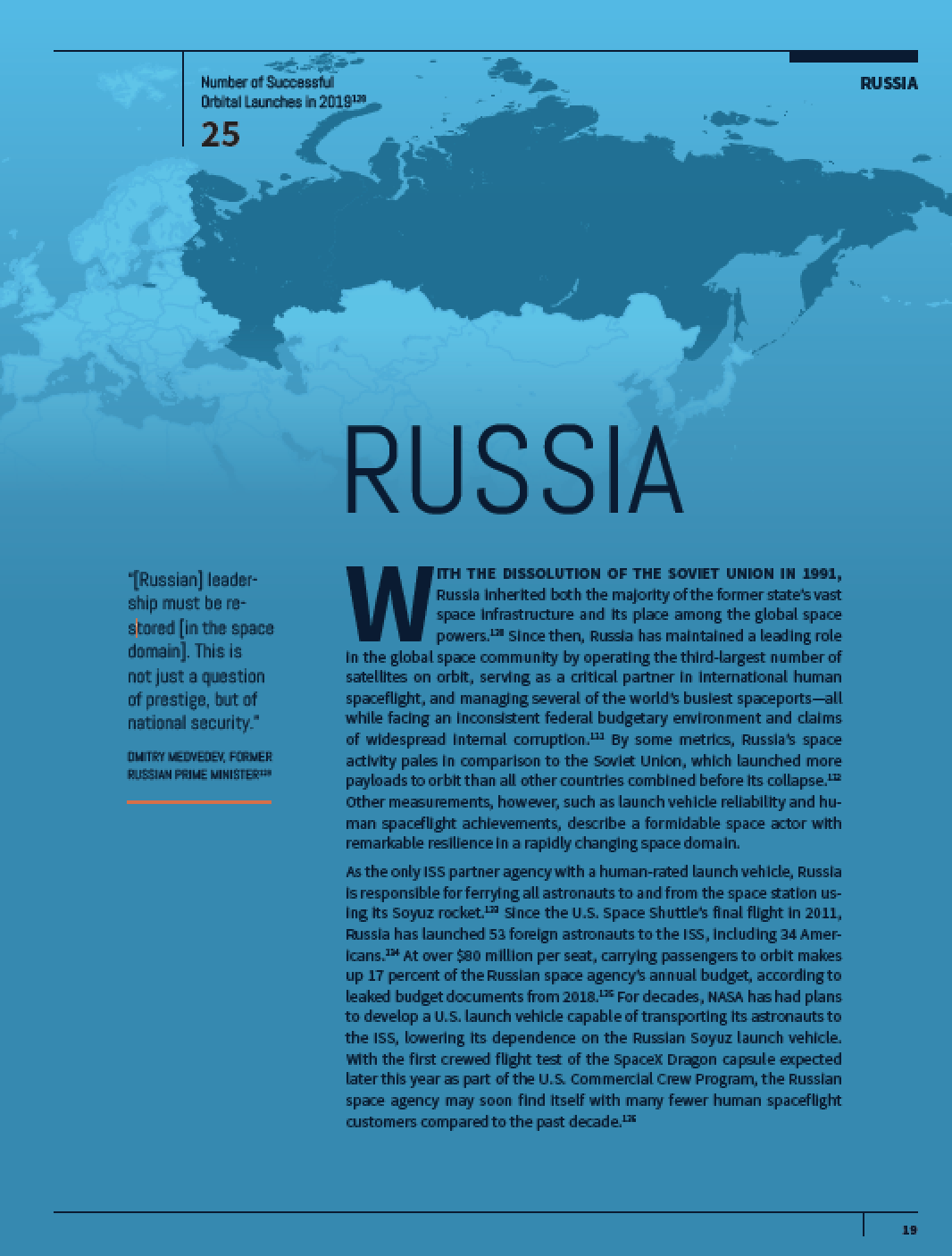
By some metrics, Russia’s space activity pales in comparison to the Soviet Union, which launched more payloads to orbit than all other countries combined before its collapse. Other measurements, however, such as launch vehicle reliability and human spaceflight achievements, describe a formidable space actor with remarkable resilience in a rapidly changing space domain. As the only ISS partner agency with a human-rated launch vehicle, Russia is responsible for ferrying all astronauts to and from the space station using its Soyuz rocket. Since the U.S. Space Shuttle’s final flight in 2011, Russia has launched 53 foreign astronauts to the ISS, including 34 Americans. At over $80 million per seat, carrying passengers to orbit makes up 17 percent of the Russian space agency’s annual budget, according to leaked budget documents from 2018. For decades, NASA has had plans to develop a U.S. launch vehicle capable of transporting its astronauts to the ISS, lowering its dependence on the Russian Soyuz launch vehicle. With the first crewed flight test of the SpaceX Dragon capsule expected later this year as part of the U.S. Commercial Crew Program, the Russian space agency may soon find itself with many fewer human spaceflight customers compared to the past decade.
Despite the geopolitical tensions on Earth, Russia has pursued robust international partnerships in the space domain in addition to its commitments as part of the ISS agreement. For example, the Russian space agency has entered into discussions with the China National Space Administration to pursue cooperative lunar exploration missions beginning in 2020. Since 2011, Russia has used the low-latitude Guiana Space Centre operated by the European Space Agency to launch Soyuz rockets, making it the only country in the world to launch a native orbital launch vehicle from a spaceport operated by another space agency. Russia has also indicated its interest in continuing its partnership with the United States after the ISS retires.
While largely successful, the Russian space industry has also been plagued with serious corruption scandals. In 2018, Russia’s principal federal investigation authority discovered that fraud cases within the country’s space and defense industry reached $1 billion. Roscosmos, the Russian space agency, has been particularly wrought with corruption. Last year, a high-level agency official—who was likely linked to an internal embezzlement scheme—fled the country to Europe while he was under investigation. Also in 2019, 58 people received jail sentences after $172 million was stolen from the Vostochny spaceport in the Russian Far East. Only a fraction of the monies lost had been recovered as of November 2019. When asked about the culture of corruption at Roscosmos, the director of the Russian Investigative Committee said “there is no end in sight.”
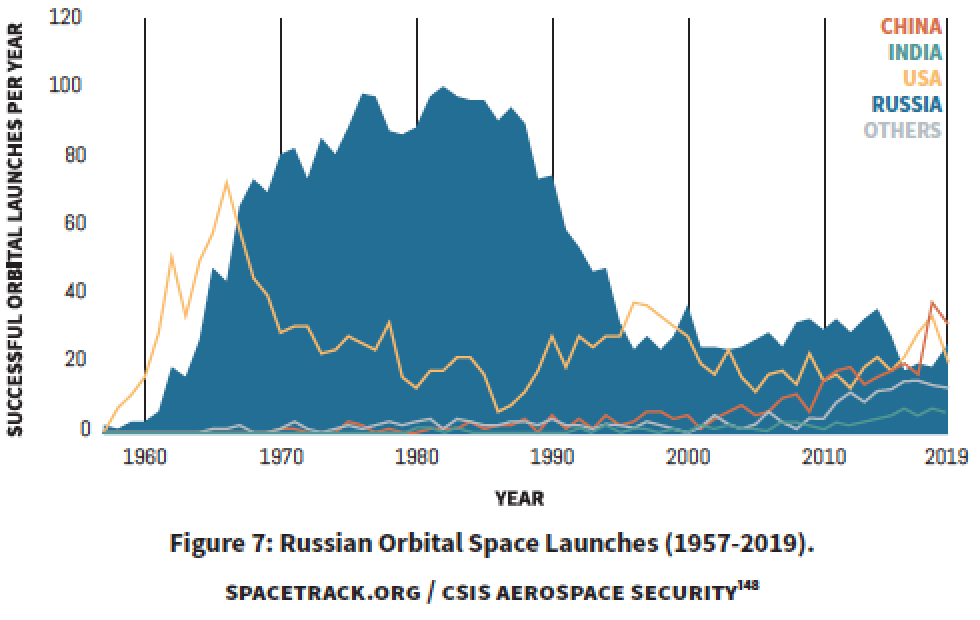
In light of these issues, Roscosmos has announced extravagant spaceflight plans for the upcoming decade. In a presentation to students at Moscow University in May 2019, the agency’s director announced the country’s plans to invest in a new crewed space vehicle with flights to the ISS by 2023, develop a new heavy-lift launch vehicle, and even land cosmonauts on the Moon by 2030. The scale of these new missions would almost certainly require the country to increase its budget for space activities, likely putting the space agency at odds with other federal spending priorities.
Space Organization and Doctrine
Most state-sponsored space activities in Russia are linked to one of two government organizations: Roscosmos, the country’s civilian space body, and the Russian Aerospace Forces, the branch of the Russian armed services tasked with military operations in the space domain. Roscosmos, known as the Russian Federal Space Agency until 2015, inherited significant space infrastructure from its predecessor, the Soviet space program. Tasked with the pursuit of international cooperation with space partners around the world, Roscosmos is one of five principal partners that support the ISS, along with civilian space agencies in the United States, Japan, Canada, and Europe.
When the Russian Ministry of Defense was created in 1992, Russia established the world’s first space force. Now known as the Russian Space Forces subbranch—a part of the broader Russian Aerospace Forces—the Russian Space Force is responsible for launching military satellites, maintaining space-based assets, monitoring space objects, and identifying potential attacks against the Russian homeland from space.

Figure 8: Orbital Trajectories for Cosmos 2542 and USA 245 on January 23, 2020. Since orbital parameters for classified satellites do not appear in the U.S. Space Command’s public catalog of space objects, analysts use observations from amateur astronomers to calculate USA 245’s orbital trajectory. nico janssen / satobs.org
Russia considers the “intention to place weapons in outer space” a main external military danger and describes establishing “an international treaty on [the] prevention of placement of any types of weapons in outer space” as a principal task for the Russian state in its military doctrine. Although Russia and China co-submitted the “Treaty on the Prevention of the Placement of Weapons in Outer Space, the Threat or Use of Force Against Outer Space Objects” to the Conference on Disarmament in 2008, the United States dismissed the proposal as a “diplomatic ploy,” and refused to support it. In 2014, Russia and China reintroduced the treaty, prompting a similarly chilly reaction from the United States. In response to the Indian ASAT test in March 2019, the Russian Ministry of Defense acknowledged India’s otherwise strong dedication to preventing an arms race in space while simultaneously blaming the United States for creating an environment in which developing space actors are compelled to test anti-satellite weapons on orbit—a clear jab at U.S. opposition to Russia and China’s failed treaties.
Although Russia’s military doctrine has not been publicly updated since December 2014, some analysts expect a new version may be released later this year. Since the last military doctrine was released, Dmitry Rogozin—the Roscosmos director general and former deputy prime minister for defense— has stated that Russia does not use satellites to damage other space objects. More recently, Russian military leaders have suggested that the Trump administration’s support of the U.S. Space Force warrants new “reciprocal and asymmetrical measures” from Russia in the space domain. In a December 2019 address, Russian President Vladimir Putin stated that the creation of a U.S. Space Force requires Russia to further invest in its own military space industry.
Iran
Often cited as a thinly veiled cover for its ballistic missile program, Iran’s space capabilities are relatively minimal. Iran’s space and ballistic missile systems are likely based on Russian and North Korean programs. This analysis is supported by the weak aerospace industrial base in the country, suggesting that Iran is unlikely to have the technical and industrial capability to develop complex launch technology from scratch. In 2009, Iran successfully launched its first domestically-manufactured satellite on a Safir-1 rocket, making it the ninth country at the time to have launched an indigenous satellite. The Iranian Space Agency (ISA) continues to claim to have sent various living creatures into space in the last decade, including a monkey two times in 2013. The agency had previously aimed to put a human in space by 2025, but human spaceflight aspirations were put on hold in 2017 due to budget constraints, likely linked to U.S.-imposed sanctions. However, the ISA has continued to focus on improving its SLVs.
Iran’s main launch facility, the Imam Khomeini Spaceport, is located in a larger domestic space facility, the Imam Khomeini Space Center, in the Semnan Province east of Tehran. The site is also used as one of eight missile test and launch sites in the country. Iran had four successful launches from 2009 to 2015 that put various operational satellites into orbit, none of which stayed in orbit longer than a few months. In 2014, Iran reportedly signed an agreement with Russia for its assistance in the development and launch of Iranian satellites and possibly the training of future Iranian astronauts. The U.S. Intelligence Community has assessed that “Iran recognizes the strategic value of space and counterspace capabilities” and that continued work to develop space launch vehicles will shorten the timeline to create a successful ICBM. Iran is an unusual case as countries have historically constructed space launch capabilities from military ballistic missile programs, not the other way around.251 In addition to SLVs, Iran has also developed space capabilities with military applications such as a space monitoring center announced in June 2013 that uses radar, electro-optical, and radio tracking. Iran continues to focus on space situational awareness monitoring, announcing in 2018 that experts built radars which can monitor satellites in LEO.
Iran currently has two known launch vehicles, the Safir-1 and Safir-2, the latter of which is commonly known as the Simorgh. While the Safir-1 has had successful orbital launches, the Simorgh has yet to complete a fully successful mission. In July 2017, Iran announced a successful test launch of the Simorgh, although the success of the test has not been confirmed outside of state media. For the Iraninan space program, 2019 proved to be a difficult year, with three failed orbital launches in January, February, and August, which used alternately the Safir-1 and Simorgh launch vehicles.
Failed Launch Attempt
On August 25, 2019 the head of the Iran Space Agency was quoted in state media saying that the agency planned to launch three satellites into orbit by March of 2020. The goal of these three satellites would be to help aid civilians through improving navigational, agricultural, and environmental monitoring services. Four days later, on August 29, satellite imagery from the Earth-imaging company Maxar Technologies showed a launch pad at the Imam Khomeini Space Center that appeared to be the aftermath of a failed launch attempt. Satellite imagery analysts were able to note that the pad had been recently painted, likely for the launch itself and to cover up previous damage from failed launches, with smoke billowing from the ground, indicative of a failed launch. An anonymous Iranian official admitted to Reuters that the incident was caused by technical issues but would not go into further detail.
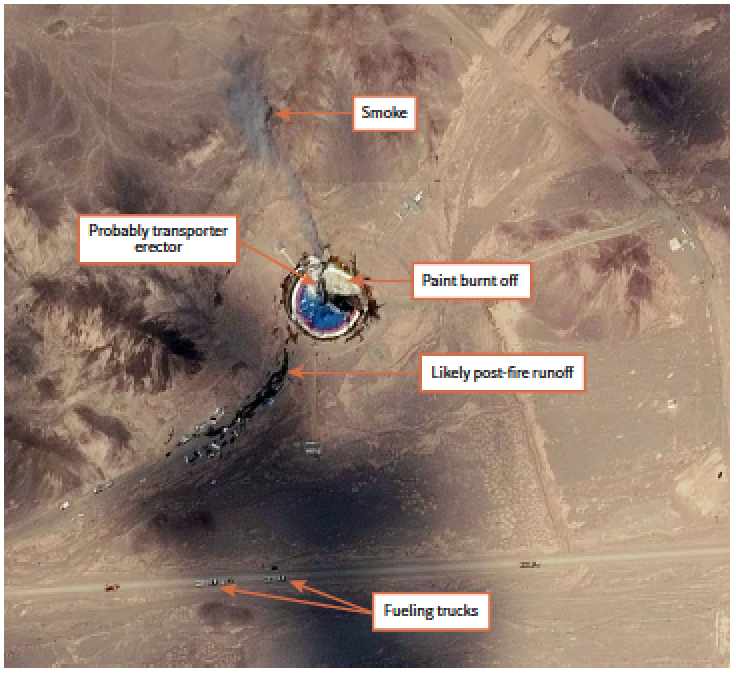 Figure 11: Satellite Image of Iranian Launch Attempt on August 25, 2019. csis / maxar technologies
Figure 11: Satellite Image of Iranian Launch Attempt on August 25, 2019. csis / maxar technologies
President Trump tweeted a high resolution image of the scarred launch pad, underscoring that the United States was not involved. Although Iran has continued to claim its space program is peaceful, that has not always been the belief of the U.S. government, whose officials often remark that the space program may be a front for developing Iranian ballistic missiles. Days after this third failed launch attempt of the calendar year, the Trump administration added the Iran Space Agency, the Iranian Astronautics Research Institute, and the Iran Space Research Center to the U.S. sanctions list.
New satellite images surfaced in January 2020 which showed the launch pad being repaired, possibly in preparation for another launch attempt with a Simorgh launch vehicle. This timing coincided with statements from the Iranian Minister of Information and Communications Technology, who announced that the program had six satellites ready to launch. He announced that two are communications satellites, named Zafar-1 and Zafar-2, were reportedly ready for a launch in early February. On February 9, 2020, the Simorgh rocket launched with a satellite on board, but the satellite did not reach high enough velocity to stay in orbit. A spokesman for the Iranian defense ministry’s space program claimed that the Simorgh functioned properly, calling it a “remarkable” feat for the space program. The minister of Information and Communications Technology continued by saying the program is “UNSTOPPABLE! We have more Upcoming Great Iranian Satellites!”
Space Organization and Doctrine
Iran was one of the founding members of the UN Committee on the Peaceful Uses of Outer Space in 1958; however, the country is one of many that has signed but not ratified the Outer Space Treaty. The Iranian Space Agency was established in 2004 ostensibly to coordinate peaceful applications of space activities and technology development for the country. The agency is under the oversight of the Ministry of Information and Communications Technology, but takes direction from the Supreme Space Council, which is chaired by the president of Iran. The head of the space agency serves as the secretary of the Supreme Space Council, which is overseen by the president and focuses on making policy for peaceful space technologies, approving state and private space programs, and promoting domestic, private, and international cooperation in space issues.
The Iranian Space Agency also runs the Iranian Space Research Center and reportedly has planned to establish a “space park,” a space-themed center that focuses on education, culture, recreation, and amusement. The park would be run in partnership with the Sharif University of Technology (SUT), a well-known research university that supports the government in ballistic missile-related projects. Little is publicly known about Iran’s doctrine for space and counterspace operations, but evidence suggests that Iran believes the capability “to deny the United States the ability to use space in a regional conflict” is critical to its security. Although the country often uses aggressive rhetoric when discussing ballistic missile activities, Iran consistently claims that its space program is peaceful.
Budgets for the Iranian Space Agency have risen in the last decade. In 2010, the space agency had a reported budget of $1.5 million, which the minister of Communications and Information Technology enthusiastically reported saying “being in space is one of the key factors in the power of governments.” In 2017, the budget for the space agency was reported to be $4.6 million. The space agency’s budget is separate from Iran’s military spending, which has increased by over 50 percent in the last five years, swelling to 7.5 percent of its total national budget for 2018– 2019.274 Though Iranian leadership takes steps to obscure the specifics of its military budget, priorities include improving domestic missile production capabilities. Because of limited domestic capability to produce reliable components, Iran continues to rely on imported components and materials for their missiles. Iran is not a major space power in terms of proven space capabilities, but it continues to invest in and develop significant counterspace capabilities.


